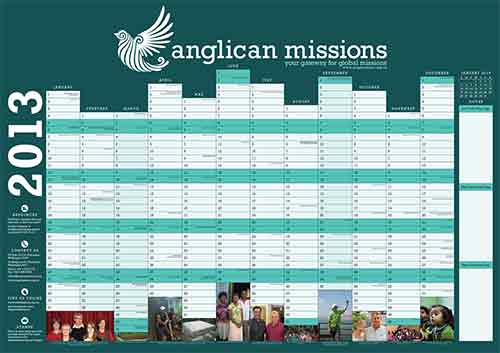In Aotearoa New Zealand, the Anglican Missions Board has just sent out its annual wall planner (Draft – you can enlarge this by clicking on this link and on the image that opens.). Some observations:
- It celebrates the Annunciation in Holy Week. That is very unusual in Western practice. And forbidden by our church (Liturgical Precedence rules). The Anglican Church of Or, however, is well known for breaking our own confused and confusing regulations.
- They Sundayise the Presentation of Jesus in the Temple. Very Church of England. It makes sense to have lots of different celebrations in the cold and dark of English winter and to extend a season until early February. Does that work when most of Aotearoa New Zealand shuts down and goes and lies on the beach and even churches go into skeleton mode? What do you call the next season, between the Presentation and Lent? Even this calendar can’t work that out and so leaves the Sunday title – blank!
- Are the term dates that of Anglican schools or of secular schools?
- Lent 5 is called “Passion Sunday”. Again – yes, … it is an option. Very 2-Year-cycle-of-readings (does anyone still use that? Yes – I know some still do) but for most of us, we read the Passion on Lent 6. Lent 6, rather than Lent 5, is Passion Sunday.
- What happened to Wednesday in Easter Week? And Thursday…
- What has happened to all the Sunday titles from June 9 onwards? They are just blank. The Three Year Sunday readings approach is now pretty universal/normative, and Sundays IMO should be named in Ordinary Time accordingly.
ps. I am not making these comments behind the Missions Board back. They sent me the draft for comment, and I made all the above points. There was one other I made that you can see was altered from the draft: that had “Easter Sunday” rather than “Easter Day”.
pps. Speaking of calendar points: Those following the Anglican Consultative Council will have noticed that the opening Eucharist, bizarrely abandoned our regular, systematic readings and celebrated the Feast of Simon and Jude instead. (Yes, of course it is allowed in the Anglican Church of Or – but why do it? They are not the patrons of that cathedral). One can only presume that the Archbishop of Canterbury, as one of his last acts, was handing our province and/or the Communion over to this patronage – patron of desperate cases and lost causes!




I see you also get to celebrate All Saints on Nov 1 and the nearest Sunday – very CofE again. On the plus side, Thomas is still on his traditional December date – we have that as an option, but July 3 is clearly the preferred date.
Thanks, Chris. It wouldn’t really be the Anglican Church of Or, would it, if we didn’t also have more than one date for Thomas? July 3 is certainly an option here. Blessings.
Ah! Thank God for the Ordo and the good old Columban Calendar.
The flip side of being the Church of Or is that we are the Inclusive Church: all possibilities included!
I could reply flippantly, Peter, with clever anagrams of inclusive, or a inclusive being an acronym for something witty with the L standing for liturgy… instead I’ll shift into serious gear: inclusive IMO is not a source or goal – it is a result. And allowing anything and everything actually does not result in being inclusive per se. That’s why we let people know the dress code for a gathering, or explain the tikanga (culture) of a gathering or group – so that they can be included. Etc. Expressed in a rush. Blessings.
spot on!
Excellent definition, and an important distinction
Here we have ‘An Australian Lectionary’. I also refer to the ‘Ordo: The Celebration of Eucharist and the Liturgy of the Hours in Australia and New Zealand’.
I am most impressed by the ‘Lectionary and Calendar’ of the Anglican Church of Papua New Guinea, for its simplicity, and its clarity in providing basic liturgical information linked to the PNG Prayer Book, for seasons. These features add to its use as a basic catechetical publication.
The contact details for comments and corrections are: Bishop Peter Ramsden, Bishop of Port Morseby psramsden.pomanglican@gmail.com
Thanks, Martin. Less is more. Blessings.
Hello. I understand ‘The Anglican Church’, but what does ‘of Or’ refer to? Or what?
I am a confused Baplican (or Anglo-Baptist), considering writing a pamphlet entitled ‘Why are the choir boys wearing nighties? and other Anglicanisms for the confused’.
Thanks, Kelly, for your visit here and comment. “The Anglican Church of Or” in the post above is a linked piece of the text, and I’m not sure if you clicked on that link and explored what you found, or not. I serve in an Anglican province that appears to provide an endless possibility of options. On any given occasion we can do A or B or C or… etc. We are not even able to agree on what we have agreed on. I call it “The Anglican Church of Or”. I hope you make your pamphlet digitally available and provide us with the link when it’s done. Advent blessings.